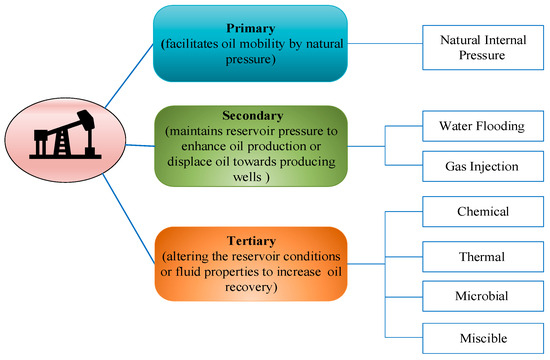MICROBIAL ENHANCED OIL RECOVERY
Microbial Enhanced Oil Recovery (MEOR) is a revolutionary biotechnological approach to increase oil production from existing reservoirs. By harnessing the power of microorganisms, MEOR offers a cost-effective, environmentally friendly, and sustainable solution to unlock hidden oil reserves.
It is a tertiary oil recovery method where microorganisms, their activity, or their by-products increase oil recovery through formations of stable oil-water emulsions, reduced interfacial tension, or bio-plugging thereby diverting injection fluids through upswept areas.
Principles of MEOR
MEOR involves the introduction of microorganisms into the oil reservoir to:
- Increase oil mobility
- Reduce oil viscosity
- Enhance oil displacement
- Plug high-permeability zones
Mechanisms of MEOR
- Biodegradation: Microorganisms break down complex hydrocarbons into simpler compounds.
- Bio-surfactant production: Microorganisms produce surfactants to reduce oil-water interfacial tension.
- Acid production: Microorganisms produce acids to dissolve minerals and increase permeability.
- Gas production: Microorganisms produce gases to increase reservoir pressure.
READ: ENHANCED OIL RECOVERY(EOR)
Microorganisms Used in MEOR
- Bacteria (e.g., Bacillus, Pseudomonas)
- Yeast (e.g., Saccharomyces)
- Fungi (e.g., Aspergillus)
Applications of MEOR
- Secondary oil recovery
- Tertiary oil recovery
- Enhanced oil recovery in tight formations
- Oil recovery in unconventional reservoirs
Advantages
Advantages can be summarized as follows:
- Injected microbes and nutrients are cheap; (the injection of microbes is out of date. The new microbial EOR technology does not need to inject microbes to the reservoir, but only inject nutrients to stimulate the indigenous microbes
- easy to handle in the field and independent of oil prices.
- Economically attractive for mature oil fields before abandonment.
- Increases oil production.
- Existing facilities require slight modifications.
- Easy application.
- Less expensive set up.
- Low energy input requirement for microbes to produce MEOR agents.
- More efficient than other EOR methods when applied to carbonate oil reservoirs.
- Microbial activity increases with microbial growth. This is opposite to the case of other EOR additives in time and distance.
- Microbial nutrients are biodegradable and therefore can be considered environmentally friendly
Disadvantages of MEOR:
- Microbial growth is favored when: layer permeability is greater than 20 md; reservoir temperature is inferior to 85 0C, salinity is below 100,000 ppm and reservoir depth is less than 3,500m.
- The recent cases proved that there is no corrosion during MEOR based on continuous field monitoring results. In addition, the stimulated indigenous microbes do not affect crude oil qualities, and there is no sign of increasing microbes in the produced liquid.
Challenges and Limitations
- Reservoir conditions (temperature, pressure, salinity)
- Microorganism selection and adaptation
- Nutrient availability and distribution
- Monitoring and evaluation
In Conclusion, Microbial Enhanced Oil Recovery offers a promising solution to increase oil production while minimizing environmental impact. Ongoing research and development are essential to overcome challenges and unlock the full potential of MEOR. As the industry continues to evolve, MEOR is poised to play a vital role in the future of oil recovery.

